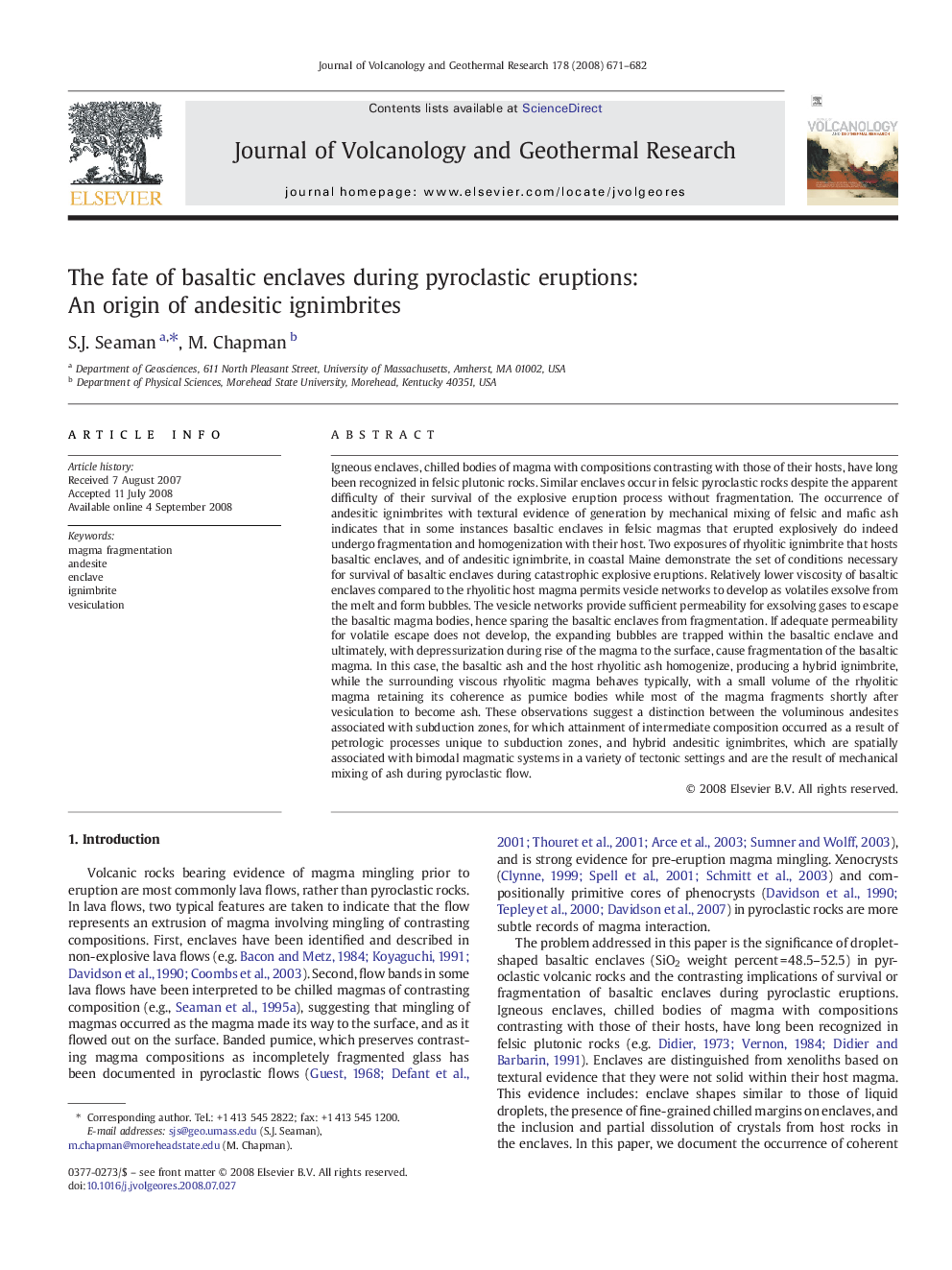| کد مقاله | کد نشریه | سال انتشار | مقاله انگلیسی | نسخه تمام متن |
|---|---|---|---|---|
| 4713365 | 1353885 | 2008 | 12 صفحه PDF | دانلود رایگان |

Igneous enclaves, chilled bodies of magma with compositions contrasting with those of their hosts, have long been recognized in felsic plutonic rocks. Similar enclaves occur in felsic pyroclastic rocks despite the apparent difficulty of their survival of the explosive eruption process without fragmentation. The occurrence of andesitic ignimbrites with textural evidence of generation by mechanical mixing of felsic and mafic ash indicates that in some instances basaltic enclaves in felsic magmas that erupted explosively do indeed undergo fragmentation and homogenization with their host. Two exposures of rhyolitic ignimbrite that hosts basaltic enclaves, and of andesitic ignimbrite, in coastal Maine demonstrate the set of conditions necessary for survival of basaltic enclaves during catastrophic explosive eruptions. Relatively lower viscosity of basaltic enclaves compared to the rhyolitic host magma permits vesicle networks to develop as volatiles exsolve from the melt and form bubbles. The vesicle networks provide sufficient permeability for exsolving gases to escape the basaltic magma bodies, hence sparing the basaltic enclaves from fragmentation. If adequate permeability for volatile escape does not develop, the expanding bubbles are trapped within the basaltic enclave and ultimately, with depressurization during rise of the magma to the surface, cause fragmentation of the basaltic magma. In this case, the basaltic ash and the host rhyolitic ash homogenize, producing a hybrid ignimbrite, while the surrounding viscous rhyolitic magma behaves typically, with a small volume of the rhyolitic magma retaining its coherence as pumice bodies while most of the magma fragments shortly after vesiculation to become ash. These observations suggest a distinction between the voluminous andesites associated with subduction zones, for which attainment of intermediate composition occurred as a result of petrologic processes unique to subduction zones, and hybrid andesitic ignimbrites, which are spatially associated with bimodal magmatic systems in a variety of tectonic settings and are the result of mechanical mixing of ash during pyroclastic flow.
Journal: Journal of Volcanology and Geothermal Research - Volume 178, Issue 4, 30 December 2008, Pages 671–682